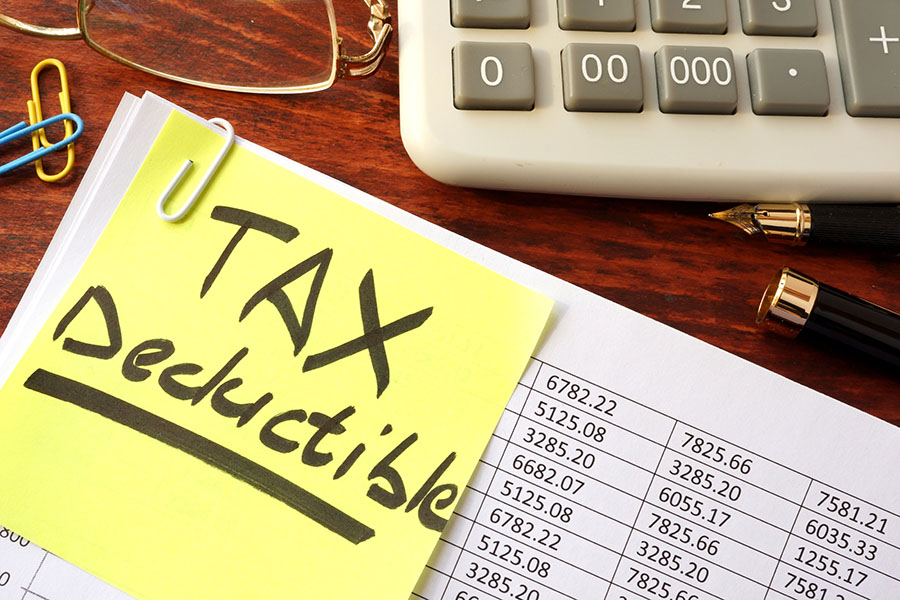Self-employment tax consists of Social Security (12.4%) and Medicare (2.9%), for a total of 15.3%. It is assessed on income earned and must be paid even if you don’t receive a 1099-MISC for your services. If you’re a sole proprietor, freelancer, general partner, or independent contractor making $400 or more in self-employment income Self-employment income is any income earned by carrying on a trade or business organized as a sole proprietorship or partnership. then you’ll need to pay it.
Self-employment Tax Rate Table | ||
|---|---|---|
Year | Social Security Tax | Medicare Tax |
2024 | 12.4% on the first $168,600 of wages and self-employed income | 2.9% of all wages and self-employed income |
2025 | 12.4% on the first $176,100 of wages and self-employed income | 2.9% of all wages and self-employed income |
Who Has to Pay Self-employment Tax
Anyone who makes $400 or more in self-employment income must pay self-employment tax. Here are a few examples of people subject to it:
- A sole proprietor, defined as any trade or business owned by one person that isn’t organized as a limited liability company (LLC) or a corporation
- A partner in a partnership
- A member (owner) of an LLC taxed as a sole proprietorship or partnership
- An independent contractor or freelancer, such as a graphic designer and Uber driver
Sole proprietors and partnerships should receive Form 1099-MISC from any clients who pay them over $600 during the year for services. However, the income you receive is taxable even if you don’t receive a Form 1099-MISC.
How to Calculate Self-Employment Tax
The calculation of self-employment tax must be done separately for each taxpayer. The maximum income subject to social security tax is $176,100 for 2025 and applies to a taxpayer’s combined W-2 wages and self-employed income. Therefore, W-2 wages received can affect the amount of SE tax owed.
Example Calculation of Self-Employment Tax With No W-2 Wages
Let’s assume that taxpayer Bob Jones’ sole source of income is from a sole proprietorship that he operates, called Jones Consulting. Jones made $200,000 of self-employment income in 2025. Bob would calculate his self-employment tax as follows:
Social Security tax: (176,100 x .124) = $21,836.40
Medicare tax: (200,000 x 0.029) = $5,800
Total self-employment tax: $21,836.40 + $5,800 = $27,636.40
Even though Bob earned $200,000 in self-employment income, the maximum earnings that the IRS will subject to self-employment tax in 2025 is $176,100.
Example Calculation Self-Employment Tax With W-2 Wages
Let’s now assume that in addition to Bob’s 2025 consulting income of $200,000, he also has $40,000 in wages from ABC, Inc. Bob would calculate his self-employment tax as follows:
Social Security tax: ((176,100 – 40,000) x .124) = $16,876.40
Medicare tax: (200,000 x 0.029) = $5,800
Total self-employment tax: $16,876.40 + $5,800 = $22,676.40
Bob’s $40,000 of wages from ABC are subject to social security tax and had social security tax withheld from each paycheck. That $40,000 of wages counts towards the maximum social security base of $176,100. Therefore, only $136,100 of his self-employment income is subject to social security tax.
How to Report Self-employment Tax
Business owners and partners use Schedule SE to compute and report self-employment taxes annually. A Schedule SE must be completed for each spouse who has self-employment income, and it must be attached to the individual return (Form 1040). Any quarterly payments of tax made during the year will offset the self-employment tax calculated on the annual return.
When to Pay Self-employment Taxes
Self-employment taxes are paid quarterly throughout the year along with any estimated income tax that’s due.
Period of Income Earned | Payment Due Date |
|---|---|
January 1 to March 31, 2024 | April 15, 2025 |
April 1 to May 31, 2024 | June 16, 2025 |
June 1 to August 31, 2024 | September 15, 2025 |
September 1 to December 31, 2024 | January 15, 2026 |
If the due date for making an estimated payment falls on a Saturday, Sunday, or legal holiday, the payment will be on time if you make it on the next business day.
There’s no form showing the tax calculation that’s filed on a quarterly basis. You include your estimated self-employment tax along with any estimated income tax you owe and pay it to the IRS.
You can make the payment by:
- Using the Electronic Federal Tax Payment System (EFTPS); or
- Mailing a check along with Form 1040-V, which is simply an IRS voucher with your name, SSN, and the amount of the payment
Frequently Asked Questions (FAQs)
Tax on self-employment income can seem very high because, in addition to federal, state, and local income taxes, you must pay a 15.3% tax for Social Security and Medicare. While employees split the cost of Social Security and Medicare with their employer, self-employed taxpayers shoulder the entire amount themselves.
Yes, you can deduct 50% of your self-employment taxes on Line 15 of Schedule 1 when you file IRS Form 1040.
Self-employed individuals can claim a number of deductions during the tax year. You can typically claim a deduction for all ordinary and necessary expenses incurred for your business, including the use of your home office, payment of health insurance premiums, travel expenses, meals, interest expenses, etc. To learn more, check out our list of tax write-offs for self-employed taxpayers.
Bottom Line
When W-2 employees transition to being self-employed or add freelance income, they are frequently surprised by the taxes assessed during filing season. On top of additional income tax on the supplemental income, the responsibility for both halves of the self-employment tax is frequently unexpected. Understanding the calculation of self-employment tax will help you better prepare for quarterly estimates and avoid surprise tax bills.


